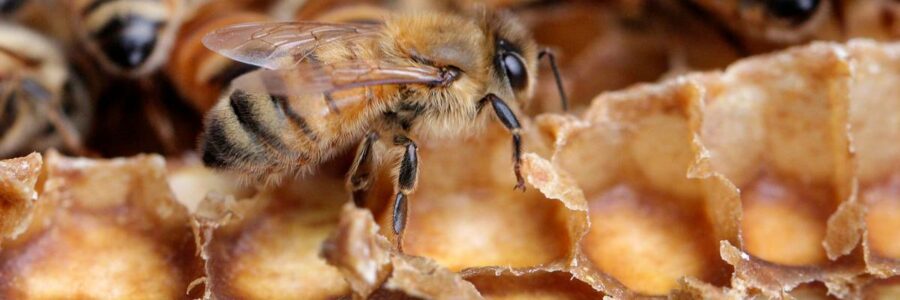
How honey exporter Comvita fared during the Covid-inflicted daigou downturn
New Zealand’s biggest mānuka honey exporter, Comvita, has had a chequered earnings history in recent years.
For so long the company was a slave to the weather, its results largely driven by the success or failure of the honey harvest.
Then came the buildup of honey inventory and rising debt.
Complicating matters were regulatory changes over what constitutes mānuka honey.
When David Banfield took over as chief executive in January last year, the goal was to produce sustainable earnings, year in and year out, irrespective of seasonal fluctuations.
The former Methven Group chief executive says that Comvita, which is due to report its first-half result on Thursday (February 25), has come a long way – the company was profitable in each of the consecutive 11 months up to and including November.
The performance over November 11 singles day in China – the biggest trading day in the world – was strong.
For the June 2020 year, Comvita reported ebitda of $4.2 million, turning around a first-half loss of $8.8m.
Net debt fell to $15.5m from $93m in December 2019, helped along by a $50m capital raise in June.
The daigou, or grey channel, trade into China has been thwarted due to closed borders and restricted air travel, hitting the likes of a2 Milk quite hard.
Despite daigou being a key part of Comvita’s business for several years, Banfield says the company’s model has helped offset the problems others have had with the channel.
Comvita took full control of its joint venture in China – the world’s biggest honey market – in May 2019.
“The difference in our model compared to a lot of others is that we have a wholly-owned subsidiary in mainland China.
“Consequently, the sum of the parts is that the team (in China) is generating in-market sales plus cross-border.”
Legislative changes have muddied the waters in the honey sector, while poor harvests have resulted in significant losses.
“These macro factors have added to problems within the business itself, where over-complication and unsustainable costs have put pressures on our bottom line and an entrenched focus on supply distracted us from concentrating on how to best meet the needs of our loyal customers.”
Over the second half of its last financial year, daigou customers had trouble getting their orders into China, which meant total revenue from Australia and New Zealand fell by $16.8m to $52.8m.
He says the company has been able to offset the daigou impact because of its “in-market” capability – 200 staffers on the Chinese mainland.
Banfield ushered in a new model in April and May of last year aimed at smoothing out earnings from a good season/bad season conundrum.
“My observation going into Comvita was that it felt like a bit of a toss of the coin.
“We worked really hard to redefine that.
“The benefit that a good or a bad harvest has to our group profit is now pretty small compared to the margin that we make from connecting to customers, in-market,” he said.
“Hopefully that builds shareholder confidence. It builds business confidence and removes fluctuations in our results.”
Making results less lumpy meant looking at the average yield from its honey, which often comes from hard-to-get-to places.
“If the cost of generating that yield meant the only way to manage was to have an above-average harvest, we stopped using it,” he said.
“That gives us surety. It may mean the difference between us getting the absolute cream on top but it protects us from downside risks.
“As we get our model right, the less we have to worry about things that we can’t control.”
Banfield came in on a ticket of stabilising Comvita’s performance, transforming the organisation, and building long-term resilience and growth.
Part of that long-term resilience was having a reset capital structure.
“There is still a fair amount to go but I think we have made good progress.”
Honey inventory finished the last financial year at$111m, down nearly $21m year on a year earlier.
He says that by 2025, inventory will be “materially lower”.
In a note titled “Getting Back to Basics,” Jarden analysts said in recent years Comvita had failed to successfully leverage the grey channel opportunity due to a lack of customer diversity and downstream margin management.
“Grey channel activity has potentially become less important as Comvita has increased focus on direct trade through Comvita China and, with this channel appearing to hold up amid Covid, likely benefiting from honey being considered an immune product,” Jarden said.
“In light of this, the company needs to demonstrate better underlying performance and communicate it in a simple, uncluttered manner.
“If Comvita is able to build on recent progress and deliver, or at least show some progress, on signalled cost-out initiatives there could be upside risk to our forecasts, however expectations management has been an issue in the past,” the broker said.
Comvita’s goal now is to achieve profitable growth, minus seasonal slings and arrows of outrageous fortune.
Recent results have not been in line with expectations, so now it was a matter of connecting to consumers in the right markets with the right products to set the company up for long-term, profitable growth.
“We have a clearer understanding of what we need to do to achieve that,” Banfield said.
“We have done an awful lot and there is an awful lot more than we will do.”
Source: Read Full Article
/cloudfront-ap-southeast-2.images.arcpublishing.com/nzme/7FMLLNLIJE5JGRWRD5DF3NIQUQ.jpg)